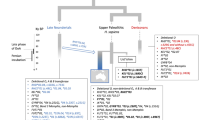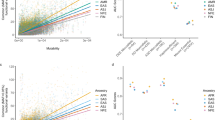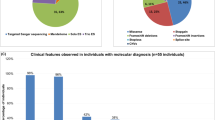Abstract
IN a previous communication1 we remarked that the blood factor Dia promised to be of great anthropological interest: it might prove to be a Mongoloid characteristic. Since then we have, on one hand, found it in a second northern Indian tribe—the Crees of northern Manitoba—three Di(a +) out of thirty-five, and on the other hand in none of thirty-five American Negroes, while Dr. Layrisse tells us that he has tested a number of Nigerians without finding any positive. It looked, indeed, as if Dia were a Mongoloid ‘marker’, so it came as a surprise when we found no Di(a+) among 156 Eskimos.
This is a preview of subscription content, access via your institution
Access options
Subscribe to this journal
Receive 51 print issues and online access
$199.00 per year
only $3.90 per issue
Buy this article
- Purchase on SpringerLink
- Instant access to full article PDF
Prices may be subject to local taxes which are calculated during checkout
Similar content being viewed by others
References
Lewis, M., Ayukawa, H., Chown, B., and Levine, P., Nature, 177, 1084 (1956).
Laughlin, W. S., Symposia on Quantitative Biology, 15, 165 (1950).
Author information
Authors and Affiliations
Rights and permissions
About this article
Cite this article
LEWIS, M., CHOWN, B. & KAITA, H. Further Observations on the Blood Factor Dia . Nature 178, 1125 (1956). https://doi.org/10.1038/1781125a0
Issue date:
DOI: https://doi.org/10.1038/1781125a0
This article is cited by
-
Incidence of the Blood Group Antigen Dia in the Tuscarora Indians of North America
Nature (1963)
-
Absence of the Diego Blood-Group Antigen in the Lapps
Nature (1960)
-
The Diego Blood Group System
Nature (1958)
-
Peculiar Distribution of the Diego Factor among the Warrau
Nature (1958)
-
The Diego (Dia) Blood Group: Tests in some Pacific Peoples
Nature (1957)



